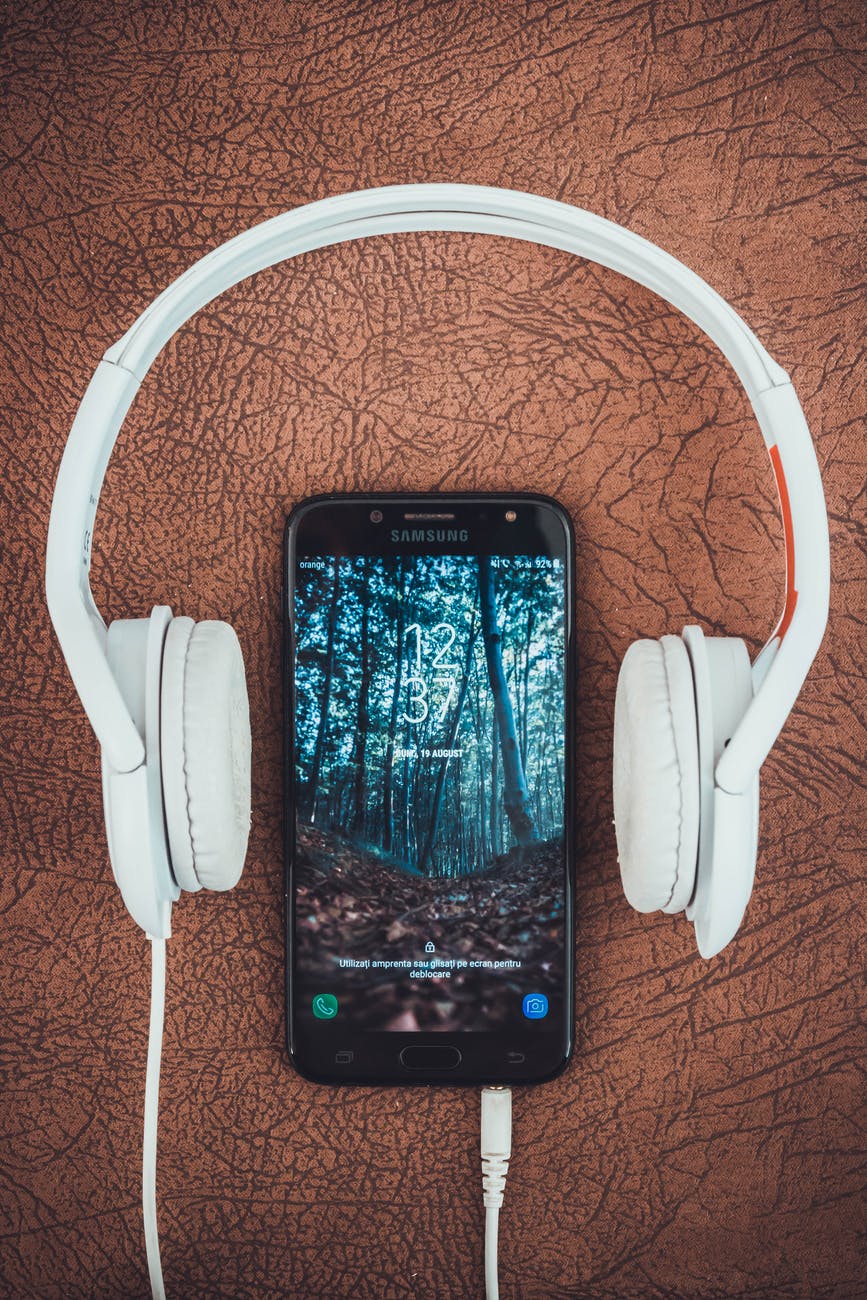What is the future of Learning Experience Design?
Overview
Instructional and Learning Design are here to stay, and this chapter discusses the future of these roles in terms of how they are values, and how the fields may change in coming years.
Why is this important?
The work involved in creating technology-enabled learning experiences has been an important part of education for nearly 30 years, and the people who do this work, as well as the definitions of their roles have changed greatly during this time. Having an understanding of how this work varies, will change over time, and what this means for the future of what we’ve designed is an important thing to consider.
Guiding Questions
As you’re reading through these materials, please consider the following questions, and take notes to ensure you understand their answers as you go.
- Where do you think the field of Learning Experience Design will head in the coming 5 or 10 years?
- How has your experience as a learner changed over the last 10 years? What made it different?
- What do you expect of your online classes?
- What technologies do you want to use in your classes?
Key Readings
Garreta‐Domingo, M., Sloep, P. B., & Hernández‐Leo, D. (2018). Human‐centred design to empower “teachers as designers”. British Journal of Educational Technology, 49(6), 1113-1130.
Howard, S. K., Tondeur, J., Siddiq, F., & Scherer, R. (2020). Ready, set, go! Profiling teachers’ readiness for online teaching in secondary education. Technology, Pedagogy and Education. https://doi.org/10.1080/1475939X.2020.1839543
Karakaya, K. (2020). Design considerations in emergency remote teaching during the COVID-19 pandemic: a human-centered approach. Educational Technology Research and Development, 1–5. https://doi.org/10.1007/s11423-020-09884-0
The Long Game of Learning Design

Whenever we work on a project to design a learning experience, we are typically not designing it to be offered once. It will not live forever, but it will live for a while, so this is why the evaluation piece from the last chapter is important. It’s also important to consider the factors outside of what we have agency over that will change in the coming months and years – everything from student demographics, changes in technology, trends in workforce, workplace culture, legislative augmentations and even our own circumstances.
For this reason, this makes documentation and evaluation of our projects all the more important. It’s also important to consider the tools and technologies we may use and their longevity and viability. For example, if we know a technology may be phased out in the coming year, developing a class or learning experiences that uses it may not be the best idea. We also need to be mindful of the sustainability of our creations. If we create learning materials from scratch that instructors can’t edit, then we need to make sure that we have human resources in place to ensure it can be updated if need be and to consider the amount of work we want to invest in a project that we thought was ‘done and dusted’ four years ago.
In terms of culture, and external factors that affect our projects, new initiatives within our workplace or learning context may have the biggest impact. It’s been well documented over the years that shifts to online learning have been born out of a need to reduce costs, while also increasing student success (Bakia, 2012), meaning as in many business sectors, educators have been forced to do more for less.

Many educational leaders are keen to push forward into alternate modalities, such as blended and fully online classes for these reasons, however, the eternal challenge that some educational leaders may still not fully understand what the development of online and blended classes may entail, continuing to think about them as correspondence classes, more akin to a passive textbook (see the Modalities section of How to we Learn with Technology? for more), referring to those who design and develop these experiences as ‘authors’ as opposed to designers. If we write a book and put is online, we get tuition without having to pay for teachers right?
In situations such as this, we can only do our best to educate those around us, and refer to the research around what it takes to create valuable online learning experiences.
Now this might be true for certain sectors, however in schools / K-12 systems, the planning and implementation of lessons usually happens in a much shorter timeframe, so this ‘long game’ may not apply, or may play out in a matter of days or weeks, not months.
Changes to the Role
First off, as noted in What is Learning Experience Design?, the job titles we all have vary greatly. Ranging from Technology Support Officer, to Instructional Leader, to Training Lead and Learning Designer, the responsibilities we have will also vary based on where we work, who we work with and what we’ve been charged to do.
What is true is that as we learn more about what teachers do to create learning experiences for their students and as we learn more about how people learn (with or without technology), there will always be a need for our role and the prevalence of people in our role will most likely increase. As this happens, division of labour occurs, leading to specialisations within the workforce, including changes in the roles that exist and what their jobs actually entail.
How many years ago did we have Technology leaders in schools, or are Instructional leaders just expected to cover technology use as well? How many years ago did we only have Instructional Designers and no Learning Designers? This division of labour is evident in trends in job titles and allocation of work. As an example we may have seen a progression such as the one below.
- Instructional Designer
- Instructional Designer + Graphic Designer
- Instructional Designer + Graphic Designer + Video Production Specialist
- Instructional Designer + Educational Developer
- Learning Designer + Educational Content Developer
- Learning Experience Designer + 3D Educational Content Developer
The need for a more specialised and expanded workforce in this area means that leadership roles need to pop up as well, leading to Director of Learning Design or Manager of Educational Innovation and other roles, who can span the technical aspects of learning technology as well as the pedagogical aspects of learning design. As Webster discusses (2017), leadership in this area can be torn between technology as a driver for innovation in curriculum and the idea that curriculum is being pulled along by innovation in technology. This dichotomy can also exist ‘on the ground’ as well, with technologies being adopted in learning environments when there is little evidence that they enhance learning.
Learning ‘Experience’ Designer
The emergence of the term ‘Learning Experience Designer’ is also telling as to where things are headed. Taken from User Experience (UX) Design, much of this work is focused on the emotional state of the users of products and technologies, and the processes in design that focus on the user’s affective experineces as they engage with a product. When we consider the transition from behaviourism to cognitivism to social constructivism, we must also consider that ever step of this theoretical journey made the learner ‘more human’ and this is coming across in instructional / learning design circles as well, with the advent of Human Centred Learning Design.
Human Centred Design as part of the design field is all about finding solutions to problems and designing these solutions from the perspective that human beings (homo sapiens sapiens) the users of solutions. This means that all the unique traits of humans, including their unique physiological, psychological and emotional traits are all taken into account when designing products and systems. This means that the products designed with the experience of the user taking precedence over the functionality or features of a product. Human Centred Learning Design then, takes the same approach, that all learners are human and they learn and feel and interact in ways specific to humans, and even do all of these things in specific contexts, lifestyles, and locations. Instructional methods such as differentiation, Universal Design for Learning (UDL), and others have been assuming this for years, and this extends to all aspects of learning design.
From a pedagogical perspective Human Centred Learning Design also aims to incorporate empathy on the part of the instructor, ensuring that all students are treated as humans based on the assumption they have lives outside of that of a student. Such an approach can ensure that learning experiences are flexible and cater to the needs of all learners (Karakaya, 2021).
One part of this direction is to focus on intentionally build care for learners as a part of each learning experience – this can come from the instructor, but it’s also important to embed this into the learning design itself (Karakaya, 2020). Examples that became more prominent in 2020 were the use of Yoga and Meditation videos from Youtube being added to classes, the addition of ‘walking lectures’ that allowed students to listen to their lectures while on a walk, more intentional social time, and many others.
Changes in Learners
As Web 2.0 technologies proved starting in the 1990s, learning experiences can happen outside of the use of chalkboards, textbooks, essays and exams – these technologies opened the door to many learning experiences we are accustomed to today, including video chats, editable web pages, and more advanced technologies like AR and VR.
We also experience the world through technology now, sharing our lives with friends through social media, short video clips, video chats and link sharing. Professionally, we do the same through our professional networks, online meetings and collaborative documents.
We consume high quality content created by YouTubers and influencers on a daily basis, so our expectations of what online experiences should be are clearly established. We as learners expect our educational experiences to align with how technology is used in contemporary society, meaning high quality, on demand and flexible.
Creating such experiences take a lot of work, and in many circumstances is more work that we are able to do by ourselves, which presents many challenges in meeting these expectations.

In addition to expectations, there will always be changes in who our learners are. Depending on economic factors, some learner demographics may shift one way, whereas others might shift another. When it comes to defining who and online learner is, this has always been a bit problematic.
Starting in 2020, every learner became an online learner and every teacher became an online teacher, so is it still worth it to examine trends of the past in terms of who online learners are? Perhaps, however given the factors previously mentioned, no matter how much we look at trends, it’s safe to say that with regards to learners, “the only thing that stays the same is change”. It makes sense then, that strategies that have flexibility for learners built in are on the rise, and that designing for a very specific ‘type’ of student may no longer a viable way to approach this work.
Changes in Technology
As we’ve learned in previous chapters of this and other books, technology is not static and is always changing, so we cannot rely on any stasis in terms of what technologies will exist in the future and what they will look like. For this reason, Learning Experience Designers and instructors need to be adaptable to the climate that surrounds them.

Speaking to changes in learner expectations, perhaps the first step in meeting this head on is to think about existing technologies that can be leveraged to a greater extent. While the majority of people on the planet now own some sort of mobile computing device like a Smartphone or tablet, many technology enhanced, or online learning experiences may not fully take advantage of their affordances. In schools / K-12, this is absolutely not the case, with tablets and smartphones being used to create amazing augmented reality experiences with robots and all sorts of exciting technologies, but in higher and tertiary education settings, this is not as prevalent. Leveraging the affordances of these technologies, such as their portability, their ability to take photos, record audio and video and share location, can be a starting point to ensuring that learning aligns more closely with how we use these technologies, so we can perhaps leave our desktop and laptop computers behind and finally ponder that question “What is a computer anyway?”
Additionally, with the new affordances that technologies give us, we must continue to be mindful of what these technologies can do to enhance learning, and conversely how they might potentially harm our students (if at all) as well as their learning.
With that being said, exciting advancements in technology mean that the job of an LxD will be that much more challenging and that much more exciting. As technologies advance into more immersive experiences, the ways in which we design lessons and classes around such technologies will have to change, much like how interaction designers who were used to working in 2D spaces like computer screens have had to adapt and invent entirely new ways of interacting with these devices. So too, immersive learning experiences are already presenting many opportunities and areas for exploration, opening new doors to transformative learning experiences that were never possible.
Key Take-Aways
- Whatever projects we work on, we should consider how long they will ‘live’ and how we can best ensure their longevity and continued viability.
- [Insert Job Title Here] and others that support the development of technology-enhanced and online learning experiences will most likely grow in demand in the coming years.
- Hybrid / Blended and Online learning will obviously increase in the coming years, we’ll have to shift focus to a more human-centred approach to the work while also adapting to changing expectations and technologies.
Revisit Guiding Questions
Thinking about your guiding questions and reflections on your own learning experiences, how do you think these will change in the future? Do you agree with what was covered in this chapter, or was there anything that you’ve experienced that wasn’t covered?
Conclusion / Next Steps
In this book we’ve explored more advanced and emerging concepts around Learning Experience Design, and have hopefully dug deeper into what it means to create engaging and effectively learning experiences. Feel free to read more on any of the topics you learned about, whether it be through research studies, blogs, or professional networks of people engaged in this work.
References
Bakia, M., Shear, L., Toyama, Y., & Lasseter, A. (2012). Understanding the Implications of Online Learning for Educational Productivity. Office of Educational Technology, US Department of Education.
Webster, M. D. (2017). Philosophy of technology assumptions in educational technology leadership. Journal of Educational Technology & Society, 20(1), 25-36.
Did this chapter help you learn?
No one has voted on this resource yet.
Provide Feedback on this Chapter